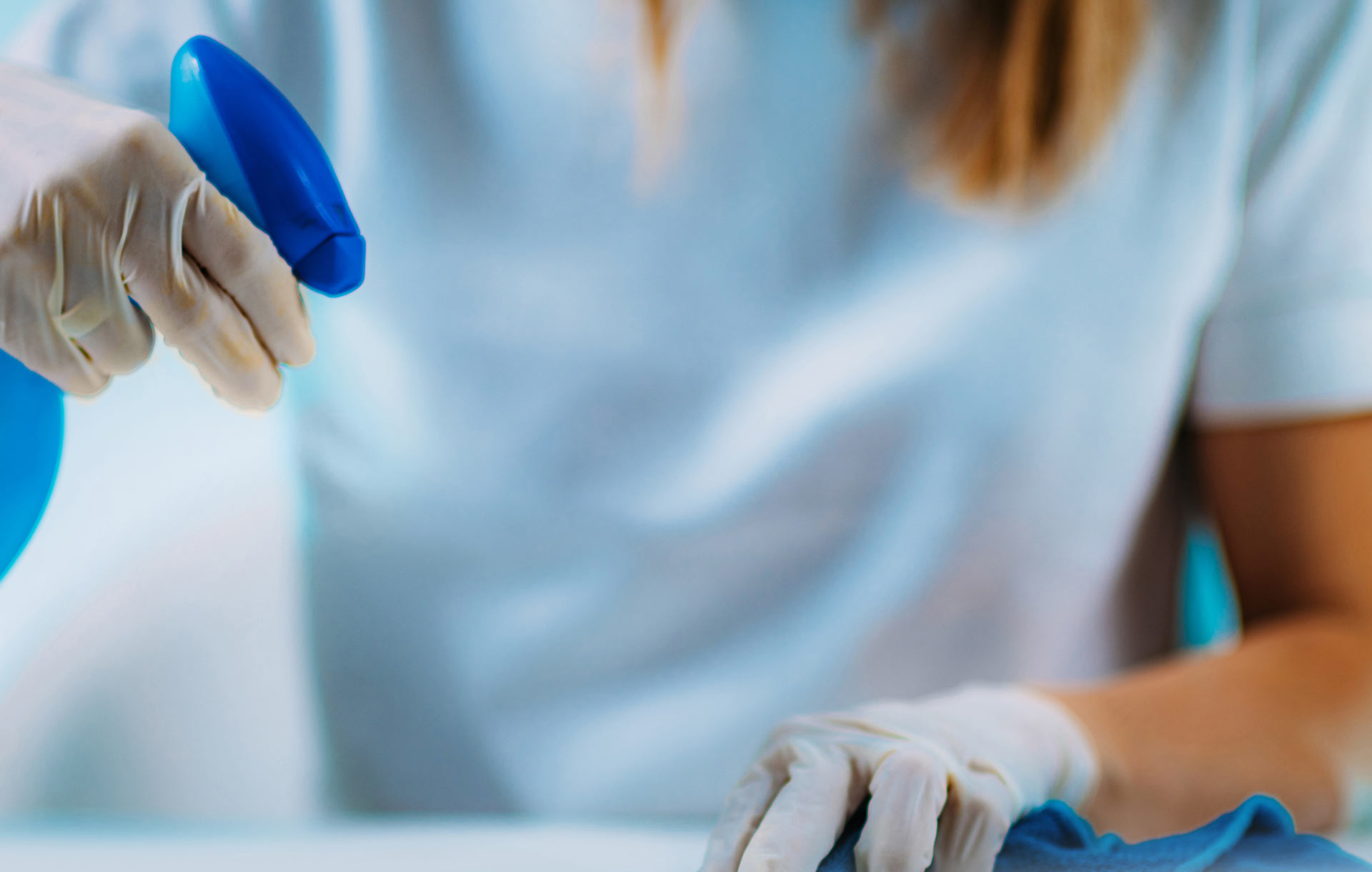Eight steps for sanitizing your massage therapy and spa treatment tables during COVID-19
Spa and massage establishments have had to modify their businesses during COVID-19. Updated sanitation practices incorporate how to keep staff and clients safe from contaminated objects and surfaces within the establishment. We know that COVID-19 is mainly spread through respiratory droplets. A spa or massage table has two individuals, the client and practitioner, directly breathing over the table for extended periods. As such, these tables should be thoroughly sanitized between users.
In this article, we will review how to properly sanitize a massage therapy or spa treatment table and table accessories within a dry room:
[ihc-hide-content ihc_mb_type=”show” ihc_mb_who=”2,4,5,6,7″ ihc_mb_template=”3″ ]
1 Remove all reusable items from the table that cannot be laundered or sanitized between clients and do not use them during the COVID-19 pandemic, i.e., table skirts or heating pads.
2 Open any available windows or doors and engage any air filtration or ventilation sources before sanitation if they are not already in use. All available air ventilation and filtration sources should already be in use during the COVID-19 pandemic regardless of when sanitation is practiced.
3 Wear a facial covering and gloves to remove all laundry used for the spa or massage service and place items in a sealed container for laundering. This includes blankets, sheets, covers, and towels.
• It is critical to wear a facial covering and gloves while handling anything that has had extended direct contact with a client’s airway during the pandemic and protect yourself from repeated chemical exposure to commercial sanitizers.
4 When laundering items before redressing the table, be sure to use the hot water setting on the washer and the high heat setting on the dryer, plus ensure that all laundry is thoroughly dried after washing with detergent. One of the best ways to reduce bacteria and viruses from the laundry is through high heat temperatures.
• Wash hands before handling clean laundry or redressing the table.
• Use a laundry machine’s sanitize setting if it is available.
• Adding bleach to the wash cycle can help eliminate germs if the laundry can be bleached.
5 Once the laundry is removed from the table, wash the table and all table accessory surfaces with soap and water, then rinse and dry as needed. The goal is to ensure there is not any debris on a surface prior to disinfection. Disinfection is ineffective on a dirty surface; therefore, washing is first required. Provide extra attention to any surface where a client has directly breathed, sneezed, or coughed. That means if a client was in a prone position on the table, be thorough with any bars and handles of a face cradle, face cushion, and top of the table.
• If the table has a hole for a client’s head instead of a separate face cradle, then be sure to wash and thoroughly disinfect all surfaces inside, underneath, and around the face hole.
6 Apply a disinfectant to all table surfaces, legs, knobs, pegs, handles, bolsters, and any remote controls used for table adjustments after cleaning. Do the same for the face cradle, face cushion and any accessories in between. Keep all sanitizer items in a childproof sealed container before and after use. Only use sealed trash receptacles for sanitation trash.
7 Allow proper contact time for the disinfectant to work before redressing the table or table accessories. Mos disinfectants require several minutes of contact time (also known as dwell time) for efficacy. Read and follow the manufacturer’s labeled instructions on a disinfectant.
8 If face cushions with a face cradle are in use, consider using at least two separate face cradles and cushions during the COVID-19 pandemic. Practitioners can alternate face cradles and cushions with every new client to help minimize exposure.
The best way to prevent the acquisition or transmission of COVID-19 is to self-isolate. If you must work during the pandemic, consider utilizing additional protection measures such as a client health intake form, including specific COVID-19 screening.
[/ihc-hide-content]













